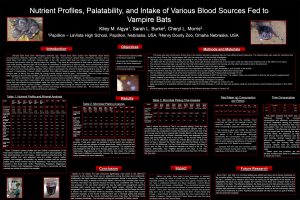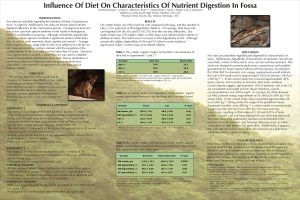Feature
Zoo Academy
Effective Collaboration Between Local School Districts and Omaha’s Henry Doorly Zoo and Aquarium Creates Unique Opportunities for High School Students
Connected Science Learning March 2016 (Volume 1, Issue 1)
By Elizabeth Mulkerrin
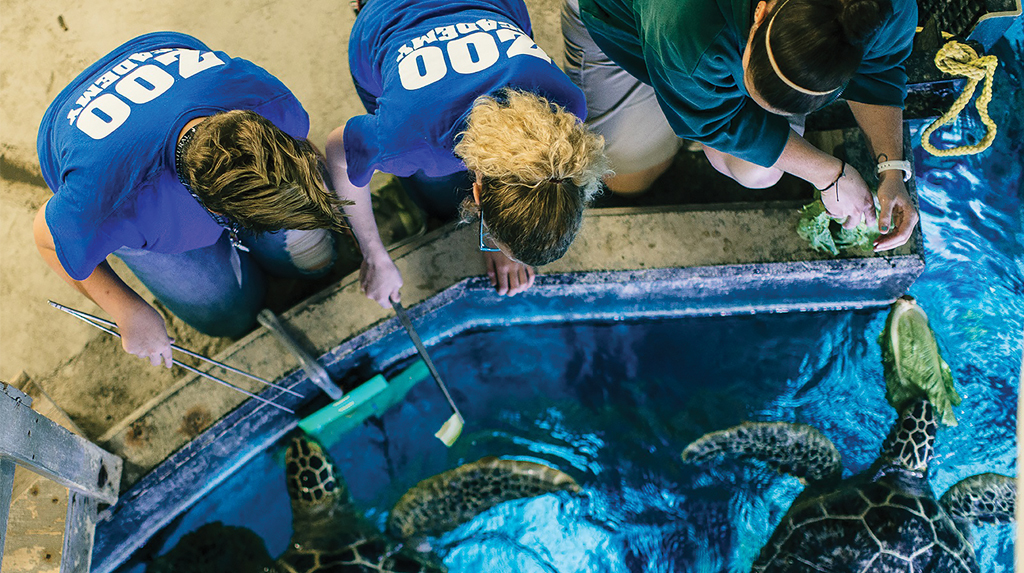
Omaha’s Henry Doorly Zoo and Aquarium and the Omaha Public School District partnered to form the Zoo Academy, a school-within-a-zoo model that relies on the successful collaboration between an informal science education organization and a school district.
Omaha’s Henry Doorly Zoo and Aquarium has been a strong and active partner in education for over 40 years, educating 1.7 million visitors annually. The zoo has become a leader in both informal and formal education by pioneering many science, technology, engineering, and mathematics (STEM) initiatives. In 1996 the zoo moved from being a partner with others to becoming a true collaborator with a diverse group of education institutions. The zoo discovered that a successful partnership requires multiple organizations to come together and share resources for a cause. In partnering with school districts, the zoo offered expertise to help with curriculum development, teacher content-knowledge development, university course teaching, and preK–12 formal education programs. Over the years, the zoo, local school districts, and the community realized they shared common education goals and were working toward creating STEM-rich learning environments for all. This led the organizations and community to turn their partnership into a more collaborative relationship in which everyone was equally involved in creating and implementing STEM-rich education opportunities for students.
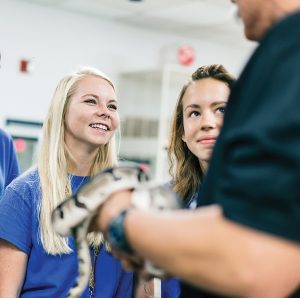
Creating the Zoo Academy
Begun as a simple, mutual-agreement partnership between the zoo and the Omaha Public School District, the Zoo Academy is a model of how to create and maintain successful collaborations between an informal science education organization and a school district. Initially, the school district provided a full-time biology teacher to teach zoology on zoo grounds and in return, the zoo provided a classroom space for the course. The institutions spent the first two years of their partnership developing trust and respect and compromising as needed to develop a shared vision and establish the roles and responsibilities of the collaboration. The zoo and school district held a common goal of developing in students the skills needed for success in zoo-related STEM career pathways. Eventually, zoo staff and administrators from two different school districts turned their partnership into a solid collaboration to create the full-day Zoo Academy, an innovative program aimed at nontraditional high school juniors and seniors. The program includes a zoo-specific curriculum, internships in zoo career fields, and opportunities to conduct scientific studies in conservation research labs.
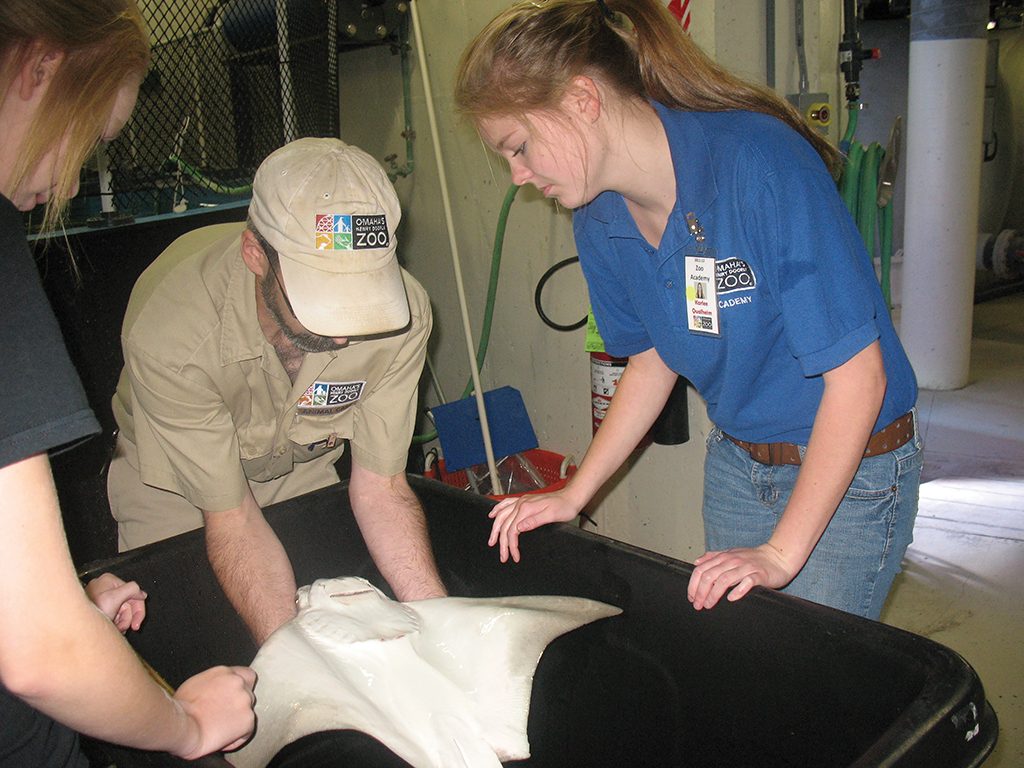
Building Rich STEM Learning Environments
The Zoo Academy program is an effective nontraditional teaching model for science education that brings all three components of the Next Generation Science Standards (NGSS) together (NGSS Lead States 2013). Disciplinary core ideas, crosscutting concepts, and science and engineering practices are incorporated throughout the Zoo Academy curriculum and in students’ daily interactions with zoo staff. Zoo staff and teachers work together closely to ensure that the core ideas and concepts are taught by aligning curriculum with daily Zoo business and applying these concepts through lessons and work. Students are able to make connections between their classroom learning and its practical application in STEM careers when they see science and engineering concepts put into practice. For example, program participants in the veterinary science course apply science processes by learning how to hold and lift animals, listen to a heartbeat, take a temperature, and monitor blood pressure. They are asked to demonstrate and apply science practices during routine animal physicals, while the veterinarian staff gives feedback on their technique and accuracy.
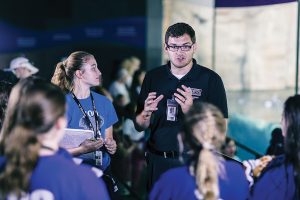
As part of the program, Zoo Academy participants are constantly challenged to show their knowledge and give input on how to solve the science and engineering questions the zoo faces. For example, on a daily basis, zoo professionals are engaged in creating new and efficient ways to simulate natural habitats that will benefit the health and well-being of the animals. Zoo Academy students become actively involved in this type of work, and they are frequently asked to think of solutions for promoting natural behaviors in zoo animals. In one instance, students were asked to develop a collecting tool that could move endangered Salt Creek tiger beetle larvae into separate incubation cylinders that increase the number of beetles surviving to adulthood. Together, academy students and zoo staff used engineering practices to successfully develop a “fishing tool” and the “larvae fishing technique,” which mimicked the natural behavior of the beetle larvae and helped the larvae survive the moving process. Alongside zoo professionals, academy students applied the eight NGSS science and engineering practices by actively engaging in the research and development of the project, testing several different tools to determine the most successful moving technique. When the mature beetles were later released into the wild, the tool and technique the Zoo Academy team developed resulted in a doubling of the population of the endangered species.
The unique combination of NGSS learning and student experiences establishes an engaging learning environment for students to make discoveries about the natural world and apply their knowledge to relevant situations.
Zoo Academy Selection Process
The Zoo Academy allows for the selection of a wide range of students with varying academic abilities. To be eligible for the program, students are required to have completed their sophomore year and to be on track for graduation. This ensures that they have the basic knowledge of science needed for the externship component of the Zoo Academy. Students who meet these requirements complete an application process by submitting a student essay, parent letter of support, and teacher recommendations. The final component of the selection process is a panel interview. The panel consists of the academy teachers, school career counselor, and zoo education staff. To ensure the best possible experience for students, an educational agreement was developed by the Zoo and school districts to ensure that students, parents, teachers, and zoo staff understand their roles, responsibilities, and commitment to the program.
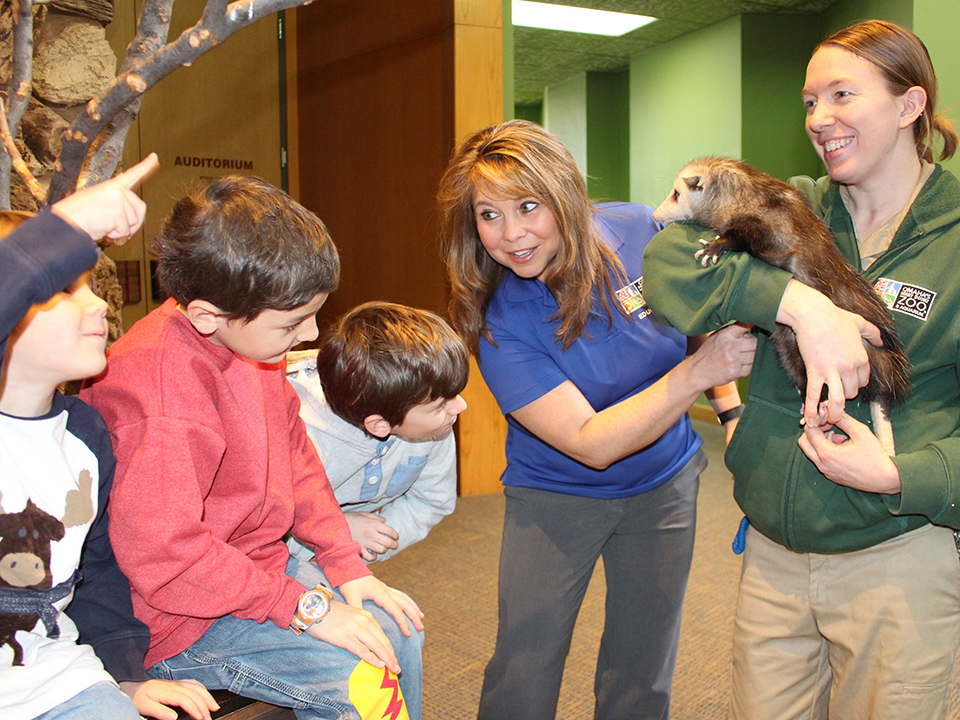
Zoo Academy Concept
The Zoo Academy concept is a combination of three crucial educational components: STEM career exploration, nontraditional classroom learning, and learning effective scientific practices for research and experimentation. The combination of these components creates an innovative and more effective learning adventure for teachers, students, and zoo staff.
1. STEM Career Exploration
Most students enter the Zoo Academy program with the idea that they want to work with animals. Exposing students to all aspects of zoo business identifies the multitude of career paths and opportunities they can pursue in postsecondary programs. They spend the first three weeks of school exploring all career opportunities at the zoo, shadowing zoo professionals and working one-on-one with them. Students rotate through 15 different zoo departments representing animal management, animal health, conservation research, horticulture, education, zoo business, graphic arts, and zoo maintenance. Through the shadowing process, program participants decide on three areas they would like to explore in depth and submit a resume to the area supervisors. The supervisors and zoo academy teachers then determine in which three areas each student will spend the following semester, learning about animal care or zoo business careers through an externship. The three-month period allows students to become immersed in zoo culture and become part of the departments they are exploring. For example, in the aquarium animal-care area, students learn about caring for aquatic invertebrates, reptiles, and fish; plumbing and maintaining pumps; nutrition; and water chemistry. The students work closely with the animal care staff to learn how to complete daily routines, such as cleaning the exhibits, performing water chemistry tests, observing the animals, conducting animal training and enrichment exercises, and maintaining the exhibits’ pumps and plumbing. With animal care staff available to help when needed, it is not uncommon to find academy students taking over the daily routines after demonstrating that they are knowledgeable and responsible enough to do so.
Training and enrichment are especially important aspects of animal care. Students who work with animal trainers learn how the different behaviors animals demonstrate help vets conduct simple medical procedures without removing them from their environment. Eventually, students may even take over some training sessions. In addition to teaching science concepts and providing hands-on experience, this form of learning has the added benefit of creating meaningful mentoring relationships between zoo staff and students. The staff become invested in their students’ education and take pride in the fact that some students even come back as college interns, zoo employees, or doctoral students.
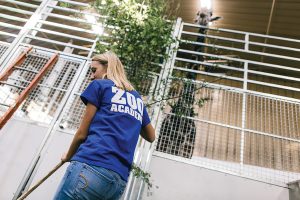
2. Nontraditional Classroom Learning
Through the Zoo Academy program, the zoo becomes a complex learning environment where teachers can guide students through active scientific inquiries, establish a learning community, and emphasize student understanding as the primary goal. The combination of these components establishes an ideal learning situation in which students can demonstrate their understanding of scientific processes and concepts, freely investigate hypotheses, conduct their own research, and analyze and communicate science explanations to peers and professionals.
The academy consists of one social studies, one math, one English, and two science teachers. These instructors teach a range of courses from algebra to calculus and U.S. Government to psychology. Each course is relevant to daily business at the Zoo. For example, the social studies teacher works with the zoo’s registrar on permitting issues with agencies such as the U.S. Department of Agriculture and foreign governments. Students help write some of the permits while learning how the government works and interacts with other countries through environmental and conservation issues. Each core teacher teams up with zoo staff to provide a rich, inquiry-based classroom environment for students. The classes are at the Zoo, which gives teachers the flexibility to work on real-world issues as they occur. The opportunity to work in a subject area as a problem is occurring is more relevant and meaningful than simulating a situation in a traditional classroom. The teachers plan the curriculum goals around relevant, inquiry-based zoo experiences and constantly evaluate their own knowledge and expertise to determine in what areas they need assistance. Having access to the zoo’s exhibits and constant communication with zoo staff allows program designers to more effectively provide a variety of learning-enrichment opportunities that aren’t available in traditional learning environments.
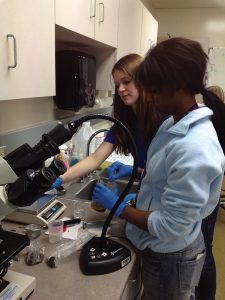
3. Learning Effective Scientific Practices for Research and Experimentation
Every Zoo employee is actively involved in the education of Zoo Academy students. These employees work directly with the Zoo Academy teachers and, in many cases, they coteach lessons. Zoo staff are a key resource to help teachers guide their students through scientific investigations and experiences. Students are given the opportunity to ask questions about animal behavior and work directly with Zoo staff and conservation researchers to develop scientific studies. Juniors in the program are introduced to scientific processes by asking simple questions and developing small research projects that help with the daily management of animals. Students and area animal care supervisors work closely, creating a research-project plan together. Seniors in the program have experience in conducting scientific research and are introduced to the work that scientists are doing in the conservation research center. Research is conducted in the fields of veterinary medicine, reproductive physiology, genetics, nutrition, and endangered-plant propagation.
The Zoo’s nutrition lab is an example of a research team that works closely with program participants and mentors them through research projects as they put into practice their knowledge of how to properly conduct a scientific investigation. This lab researches the nutritional value of the diets it produces for a diverse number of species in an effort to replicate as closely as possible the diets these animals eat in the wild, a process that includes studying species’ digestive systems and how they break down food. Students spend the first semester learning about the procedures used by scientists and technicians to ensure valid results. Collecting and labeling samples, processing, and analyzing the results of fecal samples with the staff are common tasks for students during this time. Eventually, program participants are asked to develop their own questions and methods of collecting and analyzing samples.
Examples of how these projects benefit the community as well as students can be found in the research conducted by two Zoo Academy students, which changed how the zoo feeds their vampire bats. These students presented their findings at professional conservation research meetings (Nutrition Profiles, Palatability, and Intake of Various Blood Sources Fed to Vampire Bats, by Kiley Algya, and Influence of Diet on Characteristics of Nutrients Digestion in Fossa, by Nichole Johnson [see Figure 1 and Resource]), and since then, they have both pursued careers in animal nutrition. Kiley graduated from the University of Nebraska–Lincoln with a bachelor’s degree in animal nutrition and is completing a masters in companion animal nutrition. Kiley credits her choice in career path to the experiences she had in the Zoo Academy program. Kiley states, “The Zoo Academy taught me the processes and concepts of the scientific method [and] the self-motivation needed to succeed in goals [and] overcome obstacles. [It also] gave me countless opportunities for a zoological-oriented career path. I found and narrowed my career path by completing an externship in the nutrition department.” Nichole Johnson is currently working on her PhD in animal nutrition at Iowa State University. Nichole entered the program wanting to work with animals, but she says, “The Zoo Academy helped open my eyes to the countless other opportunities outside of being a veterinarian. The experiences I had [were] largely influential on my future academic and career path aspirations, as well as on my desire to continue with nutrition research and pursue graduate degrees.” Nichole and Kiley are just two examples of alumni making a difference in animal nutrition research and being influenced by the Zoo Academy program to pursue a STEM career.
Benefits for All
Learning and putting into practice science and engineering concepts at the Omaha Zoo allows Zoo Academy students to explore career paths beyond the limitations of a traditional classroom setting, giving them invaluable firsthand access to a real-world environment where professionals in STEM fields practice every day. As stated by high school junior and Zoo Academy student Elisa M., “The many amazing opportunities you receive during shadowing has helped me have a bigger perspective on the career field I want to go into.” Students’ opportunities range from developing new animal care techniques to advocacy for protecting and promoting a healthy planet for animals, and these benefits can even extend beyond the academy and into the real world, as was the case for Zoo Academy students who recently helped create an anti–shark finning bill. The students worked with state legislatures to develop the bill, which would stop the sale of shark fins in the state of Nebraska and help protect sharks from overfishing. (The bill is currently being reviewed by a legislative committee.)
Students aren’t the only ones who benefit from the Zoo Academy program. The scientific community also benefits, with the majority of program participants pursuing STEM fields after graduation. Zoo Academy alumni move into postsecondary programs in STEM fields related to agriculture and natural resources (35%), scientific research and engineering (35%), and health services (17.6%), as well as careers not related to STEM (11.7%). The school districts involved in the program are able to better meet their goal of educating students by providing relevant skill development opportunities and a rigorous, up-to-date curriculum, all in a facility they wouldn’t have access to without the districts’ collaboration with the zoo. Finally, the zoo benefits because Zoo Academy students often become future zoo employees, especially since they have spent nine months developing the knowledge and skills needed to work in many positions at the zoo. Academy alumni may become summer animal care staff, volunteers, and college interns. Several Zoo Academy alums have completed their postsecondary education and returned as veterinary interns, veterinary technicians, full-time animal care staff, and other employees in related career fields. Laurence W. is a Zoo Academy alumnus who worked closely with the Zoo’s geneticist. Laurence pursued a career as a geneticist for seven years and recently changed his career path to become a high school science teacher. Laurence recently commented, “I love being a science teacher, and the path that lead me to this point was heavily, heavily influenced by the work I did in the Zoo Academy program and the relationships I built with the Zoo Academy teachers.”
The collaboration between Omaha’s Henry Doorly Zoo and Aquarium and local school districts has proven to be very successful in establishing a win-win environment for all students and partners. Developing unique collaborations can benefit your communities by growing your own work force and fostering STEM learning.
Elizabeth Mulkerrin (elizabethm@omahazoo.com) is Director of Education at Omaha’s Henry Doorly Zoo and Aquarium in Omaha, Nebraska.
STEM High School Informal Education



